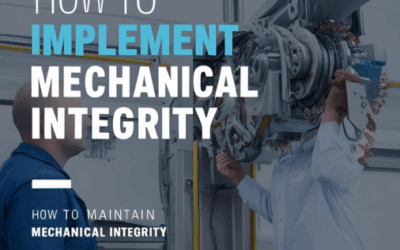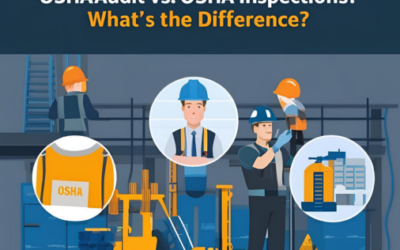Don’t let your subcontractor’s problems rain on you.
- Help your subs to have a better idea what is expected of them.
- Help your subs understand what to do when OSHA shows up.
- Help your subs understand what to do in an emergency.
- Help your subs understand how to prevent Heat Stroke.
- Improve your documentation to minimize liabilities from Subs unsafe behavior
- Make your insurance company reconsider liability insurance discounts.
- Show your customers you are proactive regarding OSHA Compliance.
WHAT IS THE COST OF NOT FOLLOWING OSHA SAFETY GUIDELINES?
| COST | VIOLATION DETAILS |
| $ 250 to $1,500 | For every Bad Extension Cord |
| $ 800 to $1,200 | Not maintaining a 3-point contact while climbing a ladder carrying tools |
| $1,500 to $2,300 | For every Damaged Ladder or a ladder not extending 3 feet above a roof. |
| $4,300 to $6,500 | Employee Wearing a Fall Protection Harness, but NOT attached to a safety line. |
You count on your subs to NOT create problems. You have a contract with them to prevent their problems becoming your problems; but OFTEN that is not enough. SEE SOME REAL SITUATIONS:
SITUATION: Your subcontractor trying to save the cost of the new ladder, allows employees to use damaged ladders.
QUESTION: Do you have written documentation that your subs are expected to have inspected ladders, and if a ladder is found unsafe it must be taken out of service?
POSSIBLE OUTCOME: In the event of sub’s employee’s death, everyone its sued. Do you have enough documentation to PROTECT yourself?
SITUATION: Your subcontractor never thought to check his fire extinguisher; or even if he would ever need one at the jobsite.
QUESTION: Do you have document that you expected every subcontractor to have a workable fire extinguisher at the worksite?
How many of your subs have enough money to fix a problem like this? Guess who everyone is going to look at to cover the cost of the fire? Answer: Most likely you.
Your subcontractor never taught his employees about fall protection. When six months had passed since the last time OSHA fined him, he thought that OSHA would never bother him again.
QUESTION: As part of your due-diligence, do you ask for a copy of their safety program and safety training; and lastly, have you explained that they are to use fall protection.
If you haven’t, you might be talking to OSHA under their Muti-Employer Policy.
One way to lose the confidence of your customers and potential customers is problems with OSHA, Poor Workmanship, Delays due to injury accidents or property damage.
Every general contractors has to rely on their subcontractors to do their job correctly and without problems.
Before learning more about the General Contractor Compliance program, let’s review a real case involving a sub and the general contractor
On May 22, 2022 Labor Department Commission decision, which overruled 11 Circuit decision, found that the General Contractor Summit, was not liable under the multi-employer doctrine for a subcontractor’s fall protection OSHA citation.
Initially, Summit was liable for OSHA fines as result of a sub-contractor’s employee non-compliance with fall protection regulations. However, the hearing found that Summit did have reasonable care required of a controlling employer in a secondary safety role. The reasons for not being financially responsible were:
- The violative conditions existed for only 10 or 15 minutes;
- It was not clear whether the general contractor’s supervisor was in a position to observe the violative condition;
- There was insufficient evidence to establish the general contractor’s monitoring of the subcontractor’s employee was inadequate, e.g., the general contractor’s supervisor typically conducted daily walkaround inspections.
- The Commission found insufficient evidence to conclude that the general contractor’s reliance on its subcontractor’s safety efforts was not unreasonable, e.g., the subcontractor had its own safety consultant, utilized its own fall protection plan, held safety meetings with its employees, provided fall protection training to those employees, and had its own supervisors conduct safety inspections at the worksite.
This decision serves as an important reminder that although general contractors may be liable for safety violations of its subcontractors, the best way to avoid such liability:
- Is to take reasonable steps to ensure they are monitoring the worksite for safety issues
- A general contractor needs to do their due diligence prior to engaging subcontractors to ensure such subcontractors have their own safety practices in place. This why every large general contractors, petro-chemical plan, etc. require copies of subcontractor’s safety program and training records.
A general contractors should review their contracts with subcontractors to make sure they address
One of key comments on the previous page was: The more comprehensive these subcontractor safety commitments are set forth in contracts, the more likely a general contractor’s reliance on a subcontractor’s own safety practices will be deemed reasonable.
This is one of the key part of General Contractor Compliance Program.
- To clearly communicate to the sub their safety duties,
- Provide them with their written safety program.
- Provide tools for them to manage their own safety program.
HOW IS THIS ACCOMPLISHED?
The General Contractor Documentation File has the following:
- A number of acknowledgements; such as the sub has received their copy of the contract between them and General Contractor.
- List of what the General Contractor expects every sub should have at the worksite. For example, a First Aid Kit, Fire Extinguisher, Necessary PPE for his employees, etc. This list will vary based on the type of work being conducted.
- A copy of the sub’s written safety program to demonstrate General Contractor’s due diligence efforts. . In the event the sub does not have a written safety program, your safety partner AGGIE SAFETY can provide one in English and Spanish.
Note: In informal discussions with OSHA, it appears having a written safety program is critical in determining how OSHA will view the citations. It is also another level of documentation showing the sub is a independent contractor.
To help the sub their safety program, they will receive a copy of Subcontractor Manual, in either English or Spanish, that includes:
- A copy of all of the Acknowledgements signed between the sub and the general contractor.
- A list of minimum expected items the sub should have at worksite.
- A copy of the their written safety program.
- Directions on what to do in an OSHA inspection. With no experience with OSHA a sub can say or do things to create a bigger problem for you. This guide will help solve this problem.
Note: The last thing you want is a death on your worksite; because the sub didn’t recognize symptom that cause an employee to die, or know what to do in an emergency situation about heat stroke, bleeding to death, suspension trauma, when to call 911 for help or rescue ambulance etc. To help in their sub’s safety program from that happening, included in the Sub’s Manual is:.
- Information on prevention heat exhaustion and stroke in English and Spanish.
- Basic First Aid A basic guide to prevent injuries from become problems that threaten everyone.
- What medical symptoms require calling 911. Basic information on specific safety issues. For roofers fall protection.
- 25 FreeTraining Modules in English and Spanish from a list of 25 different training topics. As well as , list of other services to bolster their safety program at reduced fees.


